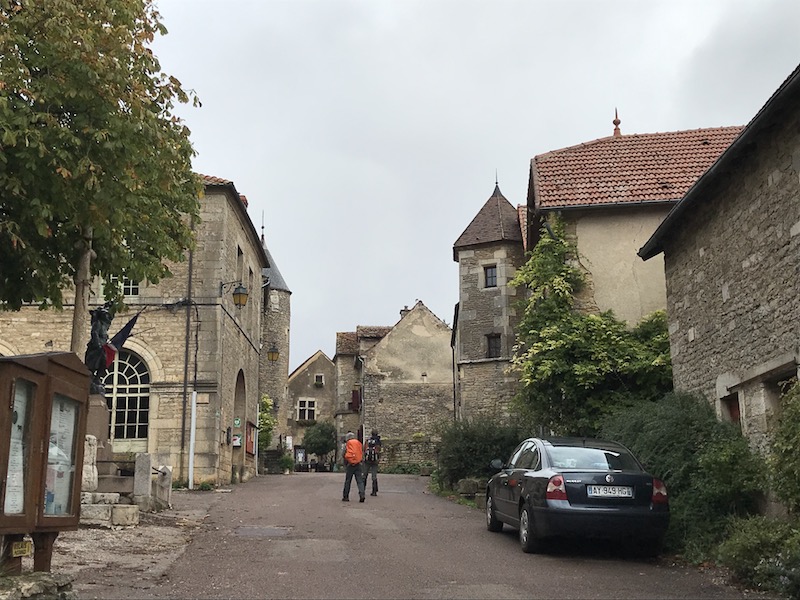Our Blog - Châteauneuf-en-Auxois, France
There are several villages in France that contain the name "Châteauneuf": Châteauneuf-sur-Loire, Châteauneuf-de-Pape, Châteauneuf within the Vendée department, Châteauneuf-sur-Charente, Châteauneuf-les-Martigues, and Châteauneuf-en-Auxois, which is where we went. The name "Châteauneuf" translates to "New Castle". The history of Châteauneuf-en-Auxois dates back to around 1180, when the youngest son of a neighboring noble family inherited a fortified castle. The first lord of the manor, Jean de Châteauneuf, renovated and extended the small castle in the early 13th century. The village peaked in the 16th century but since then, the village has been in a decline and now less than 100 people live there. It is another of the Plus Beaux Villages within France.
We parked and entered through the Porte Nord, or North gate into the village. Since the end of the Middle Ages, a wall encircled the village with several towers and 3 gates. The North gate was built at the end of the 16th century and is one of the few remaining vestiges of the village fortifications.

The Château de Châteauneuf-en-Auxois is probably the most famous thing in the town and is basically how the town got its name. I mentioned a little bit of this story above, but a castle was built here in 1132 by Jean de Chaudenay for his younger son Jehan, who took possession of it in 1175 and became “Jean I de Châteauneuf”. The only thing that remains from this castle is the dungeon. Faced with the threats of the Hundred Years War, the lords of Châteauneuf then built the powerful enclosure around the keep, which still exists today. The layout of the castle was modified to make it a more comfortable residence and give it the splendor that was normal at that time for the Dukes of Burgundy. During the French Revolution, all royal symbols and coats of arms were damaged or destroyed. The castle was then auctioned and then passed from hand to hand until 1936 when it was given to the State. Puppies are not allowed, even carried in bags, so we didn't go through it .... deciding instead just to walk around the outside and then head to the village.

Here you can see one of the entrances, along with the moat and the towers. You can see over the main entrance how the coat of arms was removed during the French Revolution.





Here you can see what was the principal entry during the Middle Ages. You can see the pillars where the drawbridge would have gone over the moat.

I stepped into the courtyard just a little bit to get pictures of the inside, to show the house, with some gothic carvings above the doors, as well as the mullion windows.




The village buildings, like many of these medieval villages, is built almost entirely out of stone. Many of the 15th century homes remain here.

Facing the château is the Place aux Porcs with one of these 15th century houses. This modest house is typical of those in the village from the end of the Middle Ages. There is a space on the ground floor for a store with the living area above it.

There was a medieval covered market at this spot in the mid-15th century although this building was built in 1840. It was a typical construction in the 19th century, where you have the weekly market on the ground floor and then the village school above.

Another interesting house, the Maison Saint-Georges (or the Maison au Chevalier). It has a circular tower containing the stairs that gave access to the upper floors. It gets its name from this bas-relief in sculpted stone above the door with a passing rider on horseback.


The Maison au mouton, also with a circular tower, is from the end of the 16th century. One of the decorations is a sculpted bas-relief of a sheep, hence the name "mouton".



And lastly, the Maison à pan de bois, or half-timbered house. Dating from the 15th century, it still retains half-timbered walls on the upper floor.
